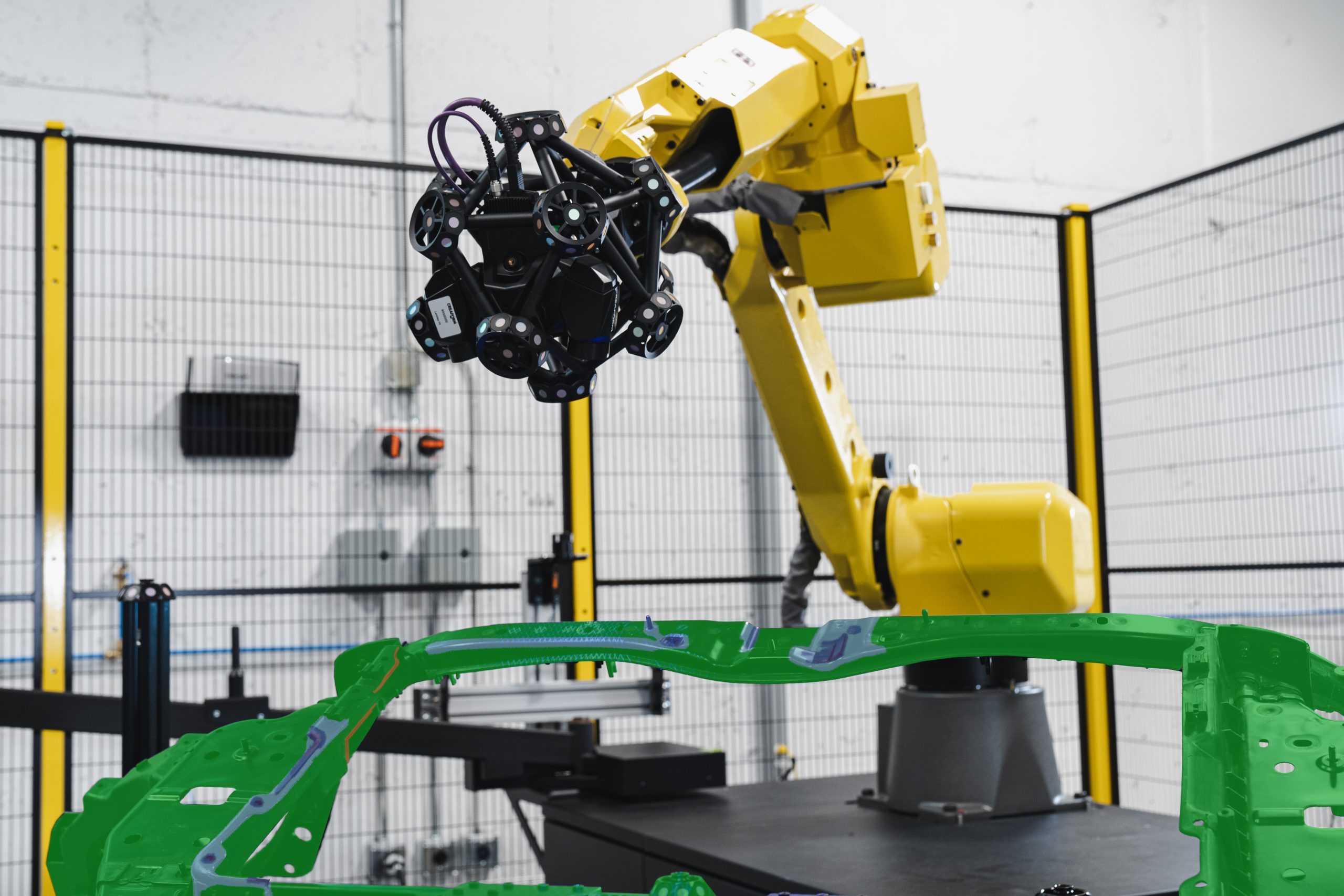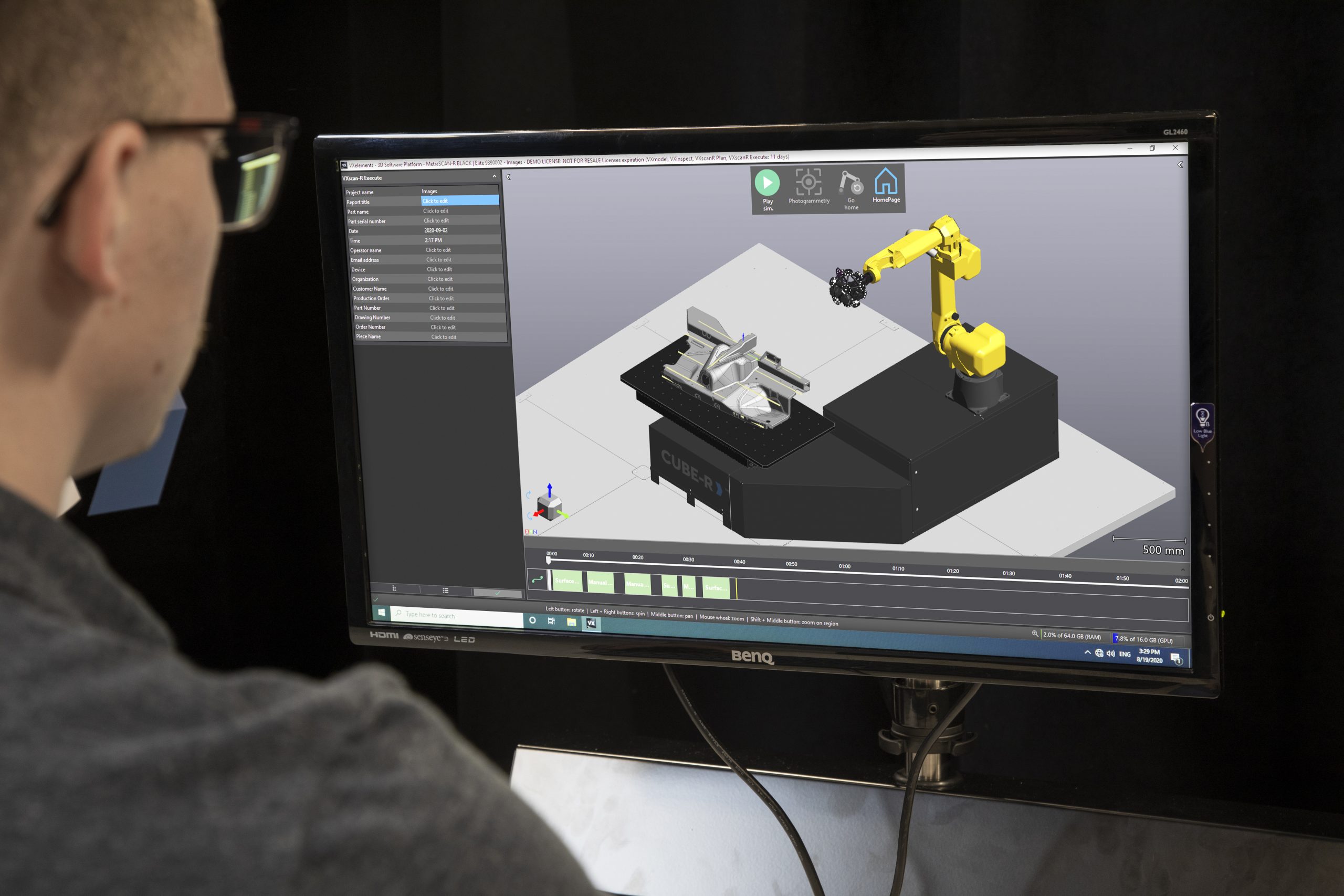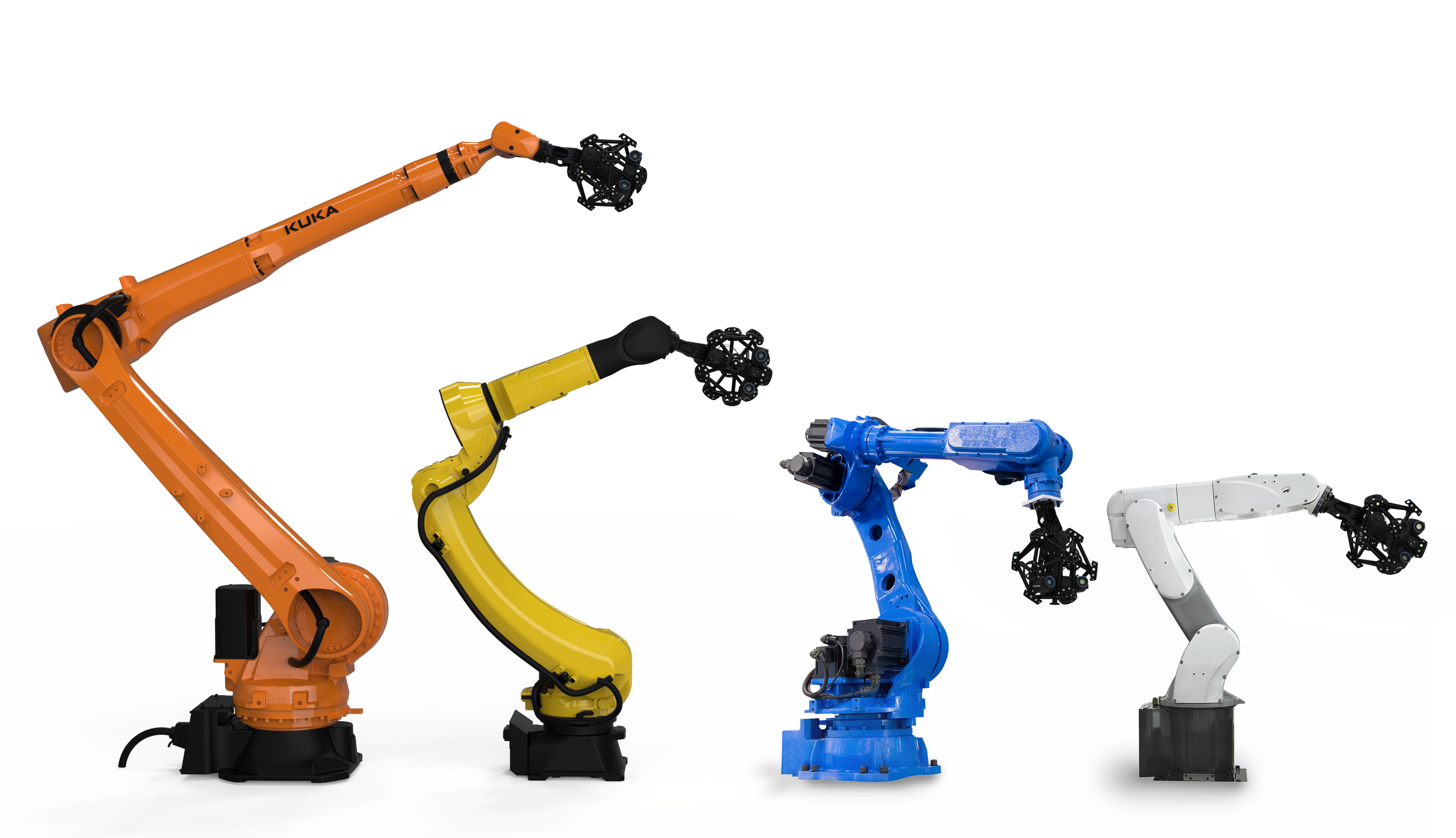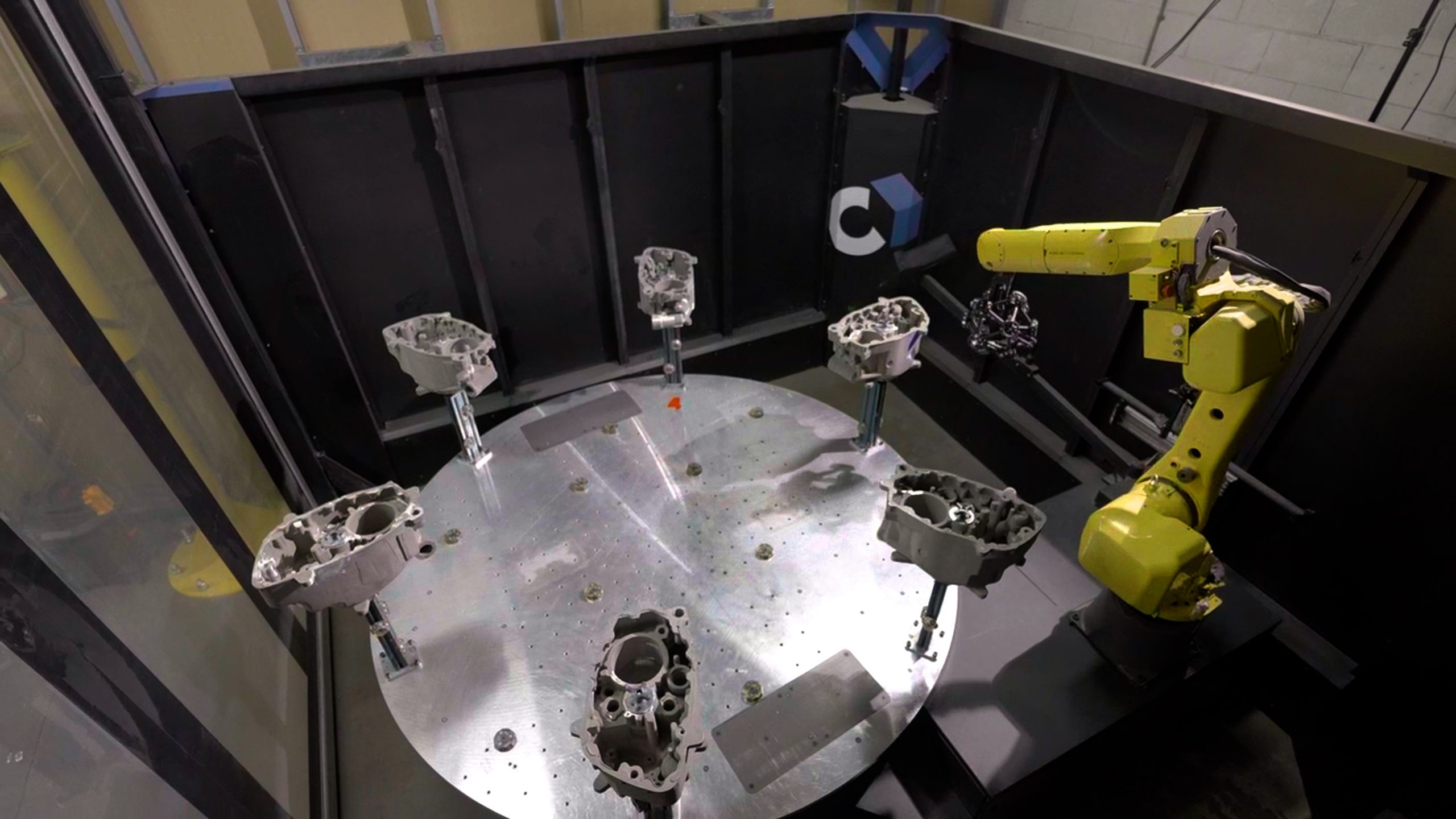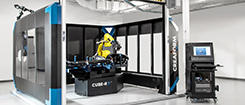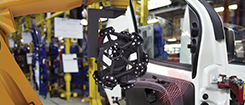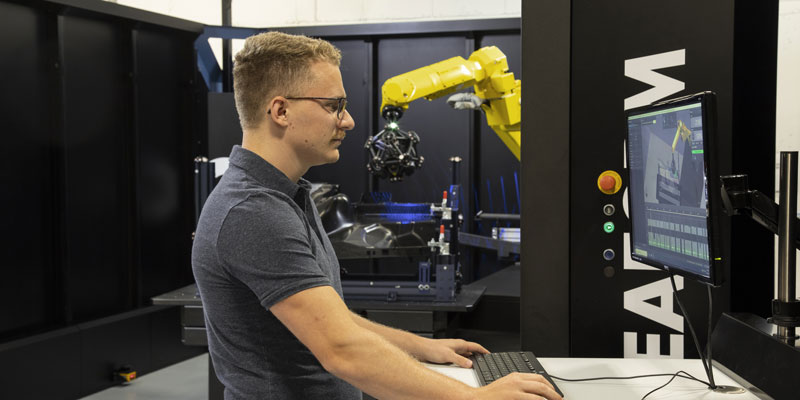September 13, 2024
The Impact of 3D Scanners on NASCAR Stock Car Racing See the articleEnd-to-end manufacturers are companies that lead products through the entire manufacturing process, from design to customer delivery. Unlike businesses that manufacture their products with a segmented manufacturing process, end-to-end manufacturers have complete control over the different parts of production, which ultimately impacts the time, money, and effort associated with product innovation and time to market.
But what about product quality? What practices can end-to-end manufacturers adopt to increase quality and deliver high-end products to their customers? Considering that they control the entire manufacturing process, how can they judiciously use quality data from one step to enrich the next? This blog seeks to answer these questions.
- 1 The Challenges of End-to-End Manufacturers
- 2 Quality Control Solutions Maximizing Product Development and Manufacturing Processes
- 3 Quality Control Automation Tools
- 4 Automated Quality Control Software
- 5 How to Implement Automated Quality Control Processes
- 6 Best Practices for Automated Quality Control
- 7 Automated Quality Control: The Path to Follow for End-to-End Manufacturers 6 parts on a turntable inside a factory.
The Challenges of End-to-End Manufacturers
Nowadays, competition is strong. Customers demand quality, and they want it delivered at a reasonable price. The market eagerly awaits the launch of new products that are both innovative and attractive. Products must function without any defects for an indefinite period while being continuously improved and updated.
These requirements put untold pressure on manufacturers, who must use all possible stratagems to increase quality, reduce costs, limit downtime, accelerate time to market, enhance innovation, and beat competition. Considering these daunting tasks, manufacturers are surely wishing the blue genie will emerge from his bottle and grant a lot of wishes.
What if the parts are large, complex, and require a long manufacturing process involving several steps? How can end-to-end manufacturers gain efficiency and limit rework in such a context?
The same challenge applies to product development processes that require several iterations, such as the design process for a composite cutting jig. How do you develop a prototype corresponding to CAD requirements while limiting the number of iterations?
The key is measuring the prototype a few times to adjust the jig and then adding or removing the missing or extra millimeters accordingly. Thus, even before the start of production, the quality boost obtained from scan data and rework is transmitted from one stage to the next, allowing end-to-end manufacturers to gain efficiency while improving quality.
This same logic applies to all manufacturing processes involving complex and expensive parts. Inspection results are sent to another stage of the process, either via a machine or a human, to correct imperfections and improve quality. After all, throwing away such valuable parts that took so long to manufacture would be unthinkable, even if they do not meet tolerances at first glance.
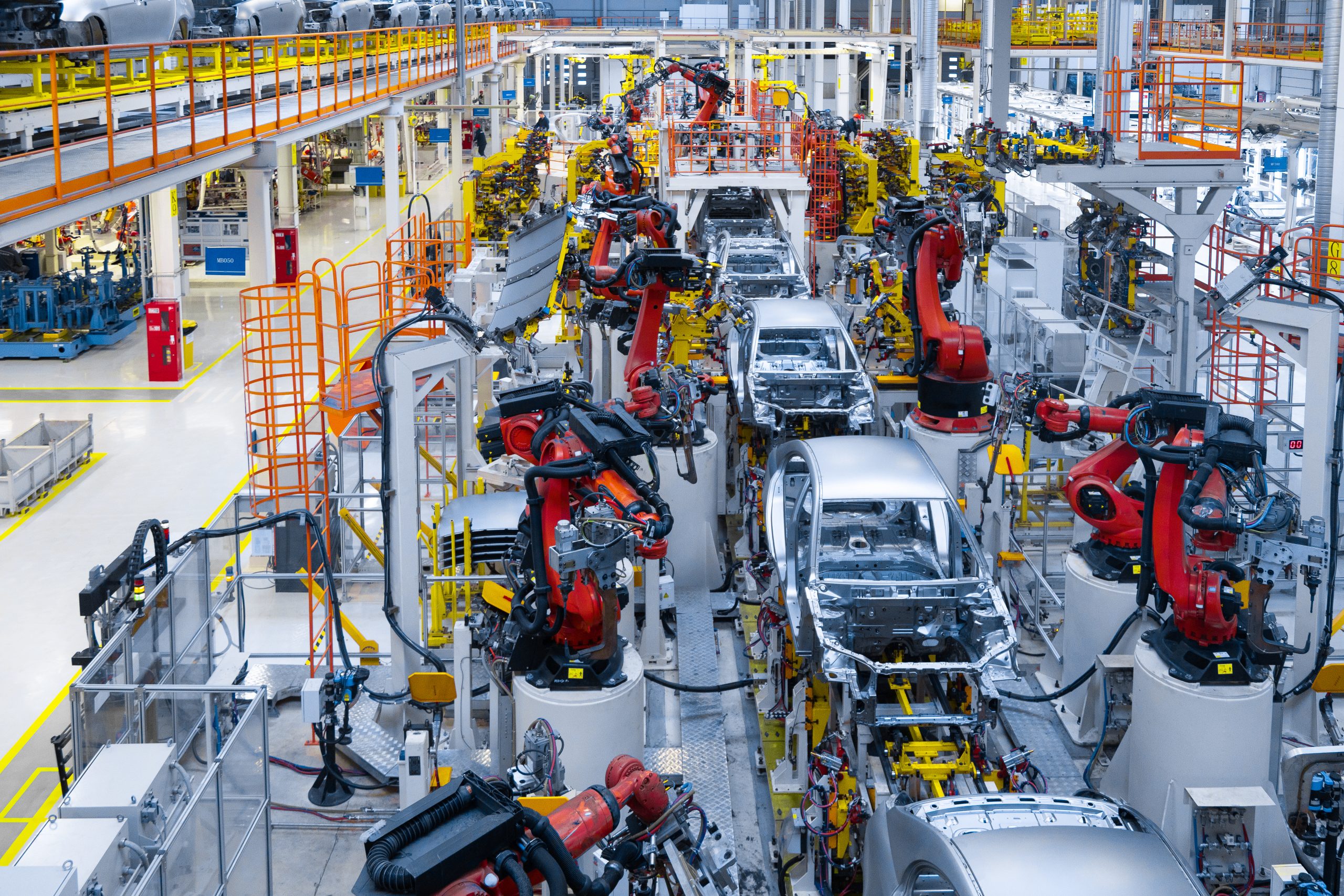
Assembly line production of new car. Automated welding of car body on production line. robotic arm on car production line is working
Quality Control Solutions Maximizing Product Development and Manufacturing Processes
Design and production engineers rely on top-quality control technologies and software solutions to help them maximize their product development and manufacturing processes. Automated quality control is the solution that will enable them to inspect part dimensions accurately and then transmit the acquired data to other machines so that the manufacturing process can be adjusted accordingly. The goal is to produce high-quality parts that meet customer requirements and deliver them on time, without delay or defects.
But what criteria must these solutions satisfy to guarantee end-to-end manufacturers better manufacturing and product development processes?
Quality Control Automation Tools
Automated measuring tools must take into account the type of part being measured. A technology for measuring any part without preparation, regardless of its size, geometry, or surface finish, can be integrated into the manufacturing process at any stage without altering its flow.
By this very fact, the speed of the quality control tool must also be considered. An instrument allowing for the acquisition of innumerable measurement points quickly, such as a 3D scanner mounted on a robot, will comply with the required cycle time, even if the part’s geometry is complex and its surface difficult to measure.
Automated Quality Control Software
An offline simulation platform offering an environment very close to reality will be able to replicate the behavior of a real 3D scanner and give a more precise evaluation of the cycle time. In addition to the ability to program robot paths in any configuration for a large category of robots, such simulation platforms will also detect whether the robot trajectory must be modified in the event of a risk of collision.
Moreover, the chosen acquisition platform should offer an integration capacity with external metrology software, such as Polyworks or Metrolog. Thus, when the acquisition is completed, the scan data can be automatically transferred to the inspection software to improve the following steps in the manufacturing process and raise product quality.
Finally, the supplier who develops both the 3D scanners and the acquisition platform will ensure that the best possible data is generated during the acquisition and during the reconstruction of the surfaces in digital format. The algorithms will be optimized to provide the best possible resolution so that difficult surfaces and large objects can be scanned with the right level of detail.
How to Implement Automated Quality Control Processes
Nevertheless, implementing automated quality control processes is a long and expensive path, and choosing the best automation tools and the most suitable acquisition and simulation software platforms are just two of the many tasks ahead. So, where to start? Here are the best practices to guide you on your journey.
Best Practices for Automated Quality Control
#1 Do a financial analysis of the first-year savings.
Before considering which automated quality control system could best suit your needs, you must decide which manufacturing task can be replaced by an automated solution. Consequently, you must know if the project is viable financially. Will there be savings on direct labor? Can you reduce rework and make gains by limiting the scrap rate since defects will be identified earlier in the process? Can the necessary floor space be reduced? Will the new tasks assigned to employees be more rewarding and increase retention? Can productivity be expected to increase, leading to an increase in customer satisfaction and demand?
To guide you, Creaform has prepared a calculator to estimate the first-year savings. The results obtained will guide you on the type of solution to choose – a turnkey solution or one developed by a robot integrator.
#2 Do a project evaluation with offline programming software.
A simulation made in a digital twin environment will enable you to verify if the robot is large enough to scan all the surfaces properly. Following this reachability assessment, you can evaluate the cycle time and confirm whether it meets the requirements. As previously established, choosing the most realistic simulation platform will facilitate this task and give confidence to the people involved, even those unfamiliar with robots and 3D scanning.
Following Best Practices #1 and #2, you will be able to assess whether your automated quality control project makes sense financially and virtually.
#3 Do a technology analysis.
Now, it is time to validate the technology. When measuring an object with already known dimensions, you must determine if the solution meets the performance requirements. Do the accuracy, repeatability, and resolution conform to the specifications? What about the technology’s ability to scan difficult surfaces without preparation? Does the real cycle time correspond to the simulated one?
A good practice is first validating the performance requirements using a handheld device directly in the manufacturing environment. This way, the 3D scanning technology can be analyzed beyond its automated context simply by focusing on the technical parameters. Then, once the technology has been validated, it can be put on a robot or in a turnkey solution.
#4 Choose the right robot integrator.
Since automating a quality control process is often a large-scale undertaking, choosing the right partners is one of the most recommended practices. The integration of the complete solution must be flawless; even if the technology perfectly meets the requirements, the simulation is realistic, and the solution makes sense financially. Otherwise, no one wins – neither the manufacturer of the metrology equipment nor the end-to-end manufacturer nor the client.
If finding the right robot integrator turns out to be complicated, an interesting alternative for end-to-end manufacturers is to opt for a turnkey solution.
#5 Write the business case for the complete solution.
Here, the initial financial analysis materializes and indicates whether the return on investment (ROI) makes sense for the organization. Only then can the green light for the project be given.
Automated Quality Control: The Path to Follow for End-to-End Manufacturers 6 parts on a turntable inside a factory.
Since they control the entire manufacturing process, end-to-end manufacturers can benefit from automated quality control by judiciously using the quality data from one step to enrich the next, especially in producing large, complex parts with difficult surfaces. In that way, they are assured greater efficiency and limited reworking, ultimately delivering products of higher quality to their customers.
Creaform offers both quality control automation tools and automated quality control software, as well as the unique expertise to accompany you in implementing your automated inspection process.
Contact Creaform to learn more about their AQC solutions and advice.


